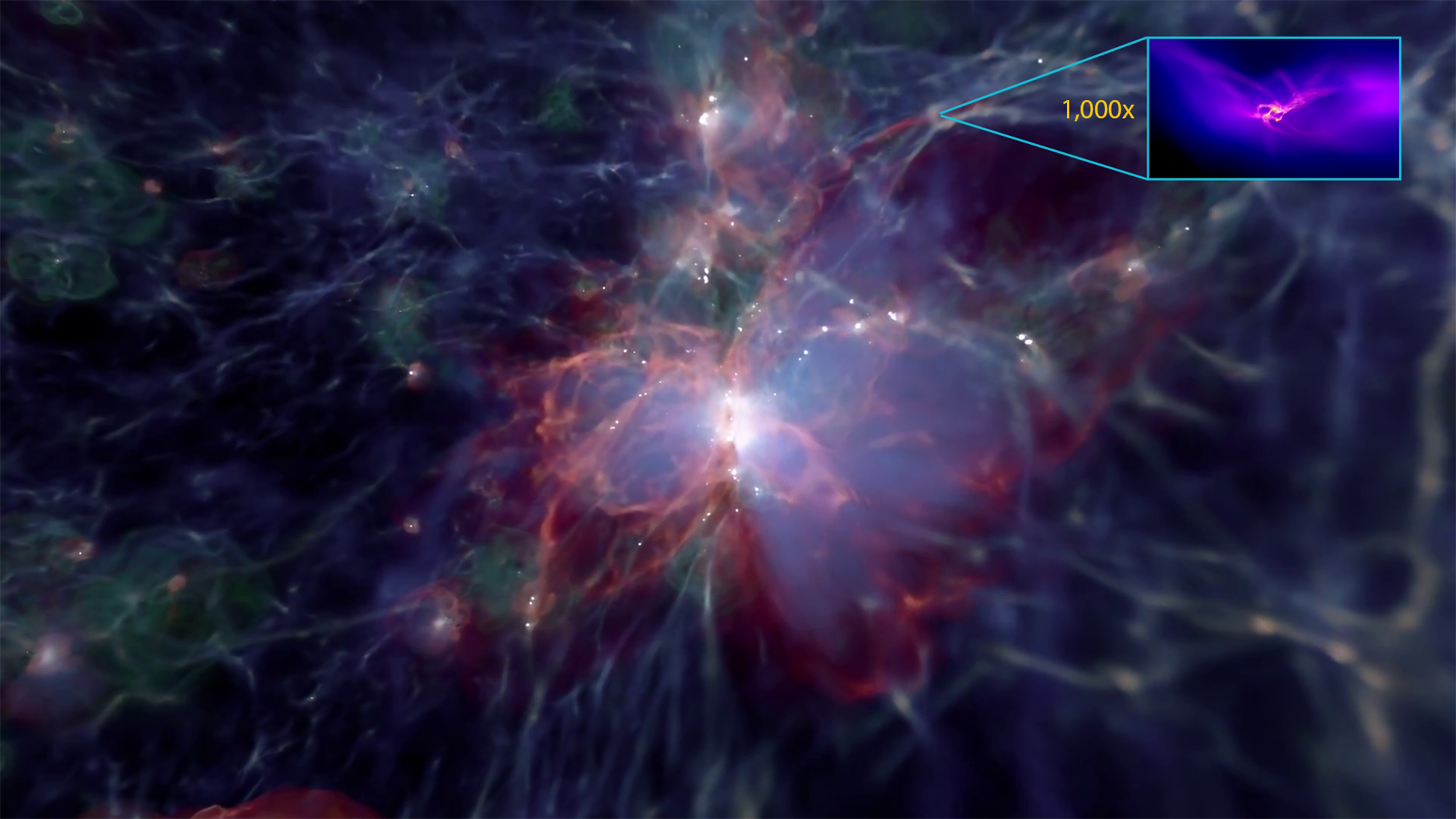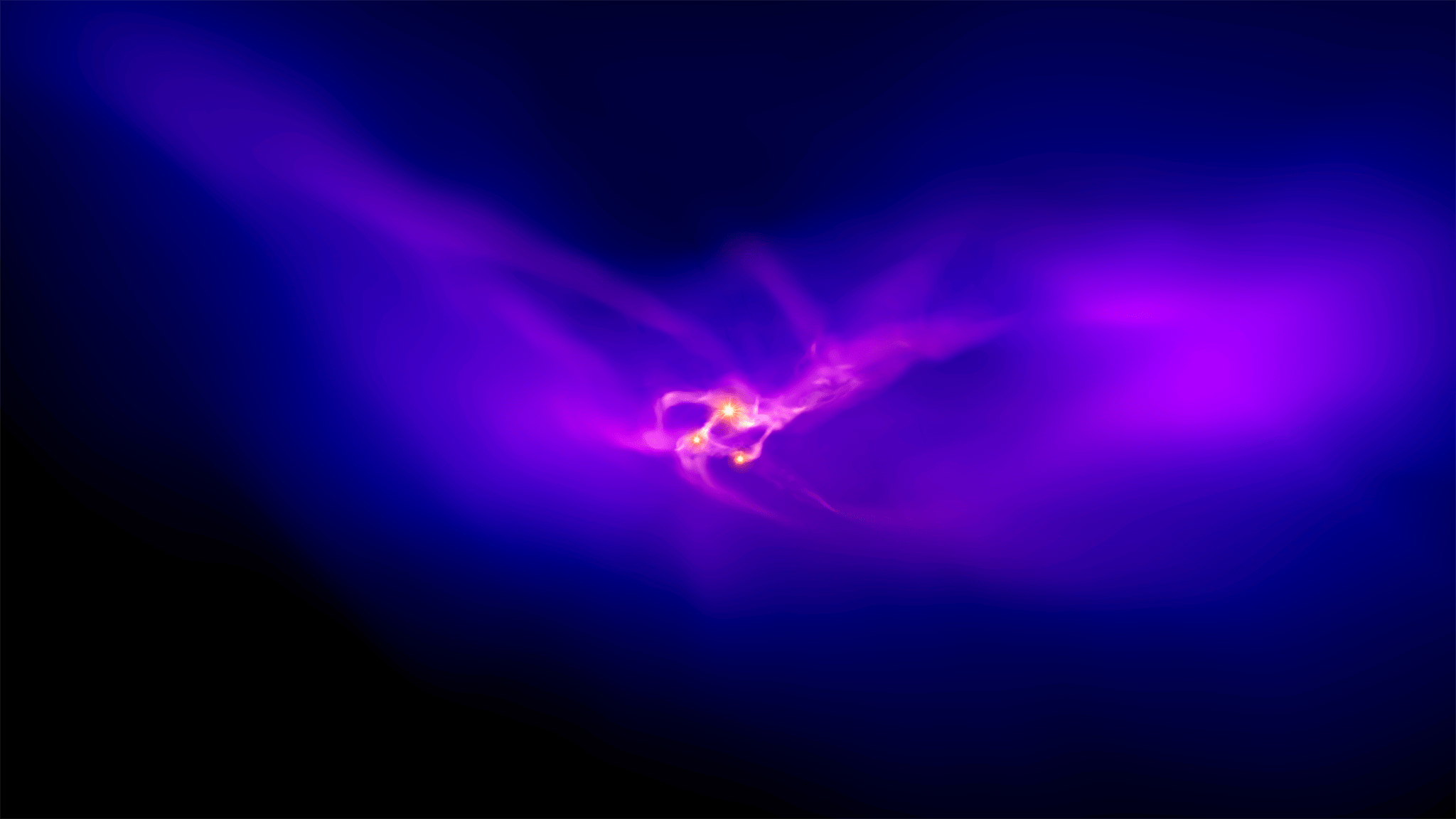When the universe was still a baby – less than 1 billion years old – some of its stars turned into monster black holes. A key mystery in astronomy has been: why are there so many supermassive black holes in the early universe?
A new study, supported by funding from NASA, the National Science Foundation and a grant from the European Commission, suggests that massive black holes thrive when galaxies form very quickly. To make a galaxy, you need stars, which are born out of gas clouds, but also an invisible substance called dark matter, which acts as a glue to keep stars from flying away from the galaxy. If the dark matter’s “halo” structure grows quickly early in its life, the formation of stars is stifled. Instead a massive black hole can form before the galaxy takes shape. Black holes ravenously eat gas that would have otherwise produced new stars, and become larger and larger.

Previously, scientists theorized that powerful radiation from other galaxies muted the formation of stars in these young regions with massive black holes. But new simulations suggest that the rapid growth of galaxies is key to growing the black holes.
A black hole is an extremely dense astronomical object from which nothing can escape, not even light. When a star explodes in a supernova, a black hole can be left behind. Alternatively, a supermassive star can burn through its fuel quickly and turn into a black hole, no explosion needed. Scientists say this is how many massive black holes form in rapidly assembling proto-galaxies.
The simulation-based study, to be reported January 23rd in the journal Nature, also finds that massive black holes are much more common in the universe than previously thought.
Media Contact:
Elizabeth Landau
NASA Headquarters, Washington
elandau@jpl.nasa.gov
(818) 359-3241

























